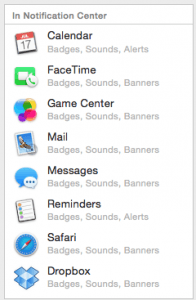In this hyper connected world, where we are “on” so much of the day, seven days per week, there are some real risks. Sure, there are important business issues with regard to communication and collaboration, but the hidden concern is employee health, including mental sanity. In the aftermath of the Great Recession and the ever present pressure on short-term results, companies are on an inexorable quest for greater productivity. Technology is at once perceived as the source of enhanced productivity as well as the opportunity to cut costs and headcount as more and more activity is automated Share on X Today’s senior management is often using traditional mindsets to a new playing field. As a result, burn out seems to be affecting a lot of people, especially if they are invested in digital media. If we use the term burn out, underneath, we might more worryingly call it depression. The real challenge is that the burn out is no longer limited to or just the fault of work. The mobile phone and digital tools are, by definition, nominative and personal. They are used seamlessly for professional and personal needs. One can say that burn out has always been the consequence of life’s pressures (whether from work or the home front). However, these digital tools are now exacerbating the situation and blurring the connection between the professional and personal worlds.
The Burning Issue of Employee Engagement

According to a Gallup survey of employee engagement around the world, in countries such as the US, UK, Australia, France, Germany and Japan, at least one in five employees is “actively disengaged.” As presented by Yves Morieux, senior partner at BCG, at HR Tech World 2015 in Paris, this term describes people who are actively working against the interests of the company.
Active #disengagement at companies is epidemical – Yves Morieux @bcg at #HRTechWorld pic.twitter.com/ntnBaqqxeK
— Minter Dial (@mdial) October 27, 2015
From Gallup’s State of the American Workplace: 2010-2012 report, by the end of 2012, “only 30% of American workers were engaged, or involved in, enthusiastic about, and committed to their workplace.” Worldwide, the numbers are generally comparable or worse. Despite the press coverage and vast resources being allocated to “employee engagement” programs, the engagement levels are stagnantly low.
Signs of Burn Out
So, what are some signs that you may be on the verge of a burnout? Some are digital queues. Others are strictly analogue.
- The most painful one is the reminder some 100x every day, i.e. every time you swipe open your mobile, of the volume of unfinished business, such as below:
 The red bubble with the number of unread messages is not just a constant eye-sore. It also represents frustrated people trying to reach you and not getting any reply. More than likely, it also means that you are struggling to be up-to-date, on time, in touch, showing up at the right meetings, etc.
The red bubble with the number of unread messages is not just a constant eye-sore. It also represents frustrated people trying to reach you and not getting any reply. More than likely, it also means that you are struggling to be up-to-date, on time, in touch, showing up at the right meetings, etc. - The notifications on your mobile keep going off, whether it’s the ping, the flash or just the pop-ups. These notifications are uncontrolled and are going to wear you down.
- The pile of magazines or books sitting on your bedside table hasn’t been touched (except for the occasional addition) for many weeks.
- The number of tabs you leave open on your browser is uncontrollably high.
- Your sports club membership card lies fallow in your wallet, a regular reminder of how you are not fulfilling your new year’s resolution.
- You are constantly saying “sorry I’m late,” when coming to meetings.
- You are regularly thinking to yourself or maybe expressing how sad you are not to spend more time with your important family members and friends.
- You’d rather not go out socially because you are constantly too tired.
- Your Facebook profile is never updated with anything cheerful… You don’t even want to like someone else’s happiness.
- You have to drag yourself out of bed… all too often.
Avoiding Burn Out
Here are my top 6 tips for executives to make sure that you avoid burn out:
- Allocate time to organize and clean up your inbox. Time spent now will be time saved later. In the interim, it could be useful to include an automatic (out-of-office) message that warns people about your communication strategy/expected length of response.
 Make sure to identify the key people with whom you wish to communicate in priority and use applications that help sort out the weed from the chaff. For example, in Gmail, actively manage and filter the incoming mail into the different tabs to help the ‘AI’ get to know which mails are more important for you.
Make sure to identify the key people with whom you wish to communicate in priority and use applications that help sort out the weed from the chaff. For example, in Gmail, actively manage and filter the incoming mail into the different tabs to help the ‘AI’ get to know which mails are more important for you.- Make sure to add some moments of personal fun in every day. I call these my “happy triggers.” For me, that means playing 30 minutes of guitar every day, listening to some good music, reading up about my favorite hockey team, etc.
- Manage your notifications. Go into the settings (see image right) and make sure to eliminate all non-necessary alerts. {Read more here on Digital Executives.]
- Learn as much as you can about sleep and how to improve your sleep habits. It is a field that has blossomed relatively recently and there is so much more we can do to improve the quality of our days by an appropriate sleep hygiene.
- Last, but not least, know where your North is. This will help you to prioritize your precious time and make sure that you are, at least, progressing along that Northerly setting.
The well-being of your employees is vital. Not that some performance-stress doesn’t have its place, but in this digitally connected world, where there are many more distractions and time sucking activities, it is always good to know why you are spending all your time doing what you are doing. On an individual level, that’s our personal journey. For a business, it should be one’s purpose, above and beyond success. As Jonny Campbell, CEO at Social Talent, reminded us at the HR Tech World conference:
Does your organization have a keystone #purpose statement that is widely understood and believed throughout the organization? @socialtalent Share on XWhat I’d love to hear from you is to what extent your company is helping figure this stuff out? To you think your company ought to be providing training and assistance on these topics? Just where should the company’s remit start and stop?
Your thoughts and reactions are welcome!

 The red bubble with the number of unread messages is not just a constant eye-sore. It also represents frustrated people trying to reach you and not getting any reply. More than likely, it also means that you are struggling to be up-to-date, on time, in touch, showing up at the right meetings, etc.
The red bubble with the number of unread messages is not just a constant eye-sore. It also represents frustrated people trying to reach you and not getting any reply. More than likely, it also means that you are struggling to be up-to-date, on time, in touch, showing up at the right meetings, etc. Make sure to identify the key people with whom you wish to communicate in priority and use applications that help sort out the weed from the chaff. For example, in Gmail, actively manage and filter the incoming mail into the different tabs to help the ‘AI’ get to know which mails are more important for you.
Make sure to identify the key people with whom you wish to communicate in priority and use applications that help sort out the weed from the chaff. For example, in Gmail, actively manage and filter the incoming mail into the different tabs to help the ‘AI’ get to know which mails are more important for you.









Trackbacks/Pingbacks